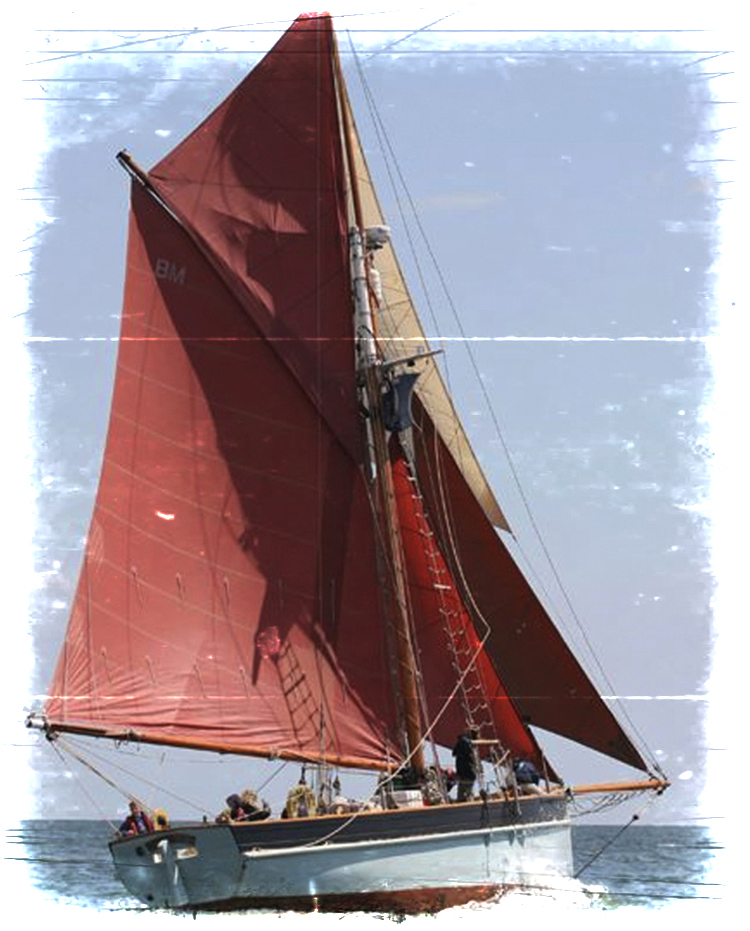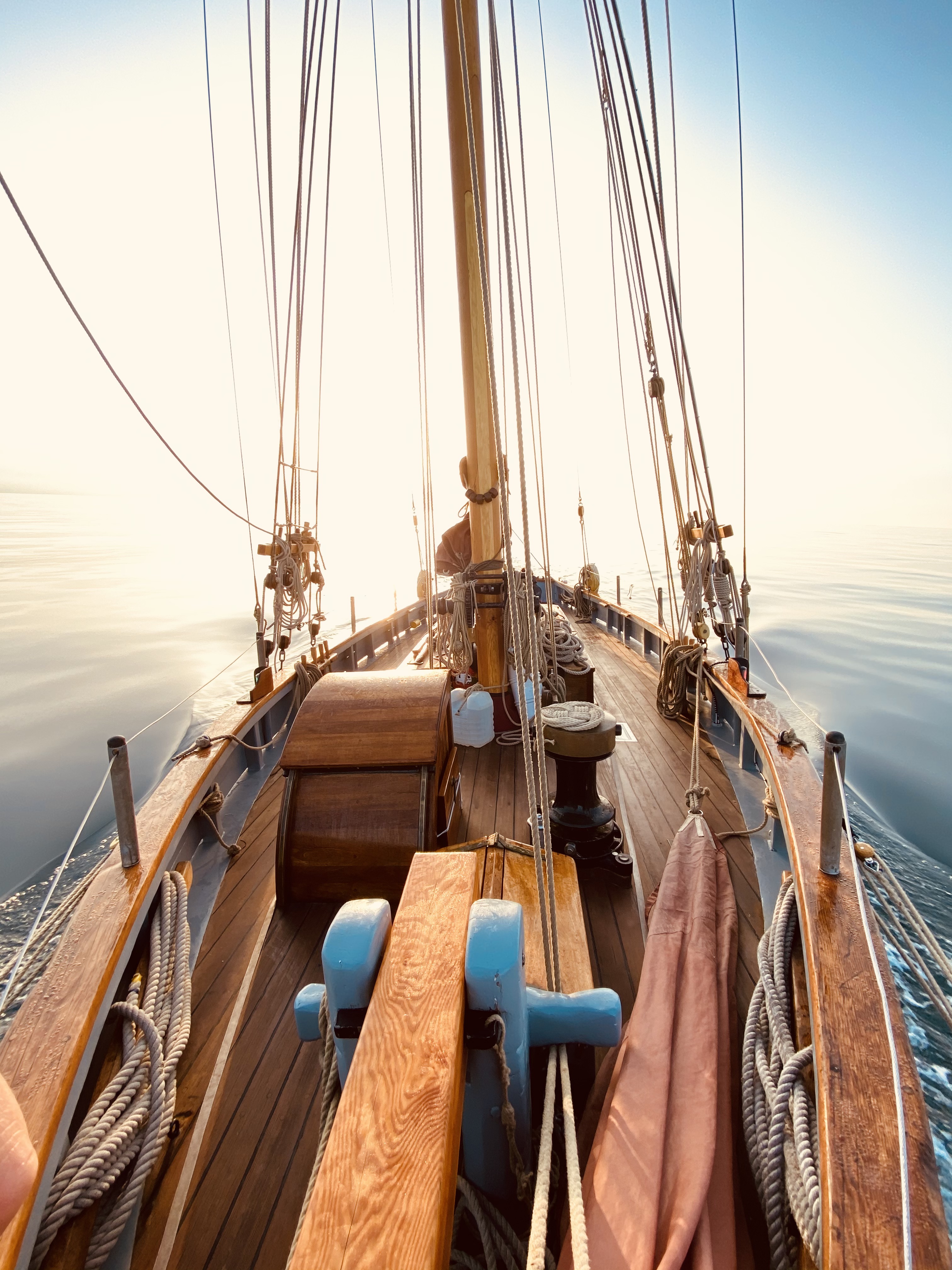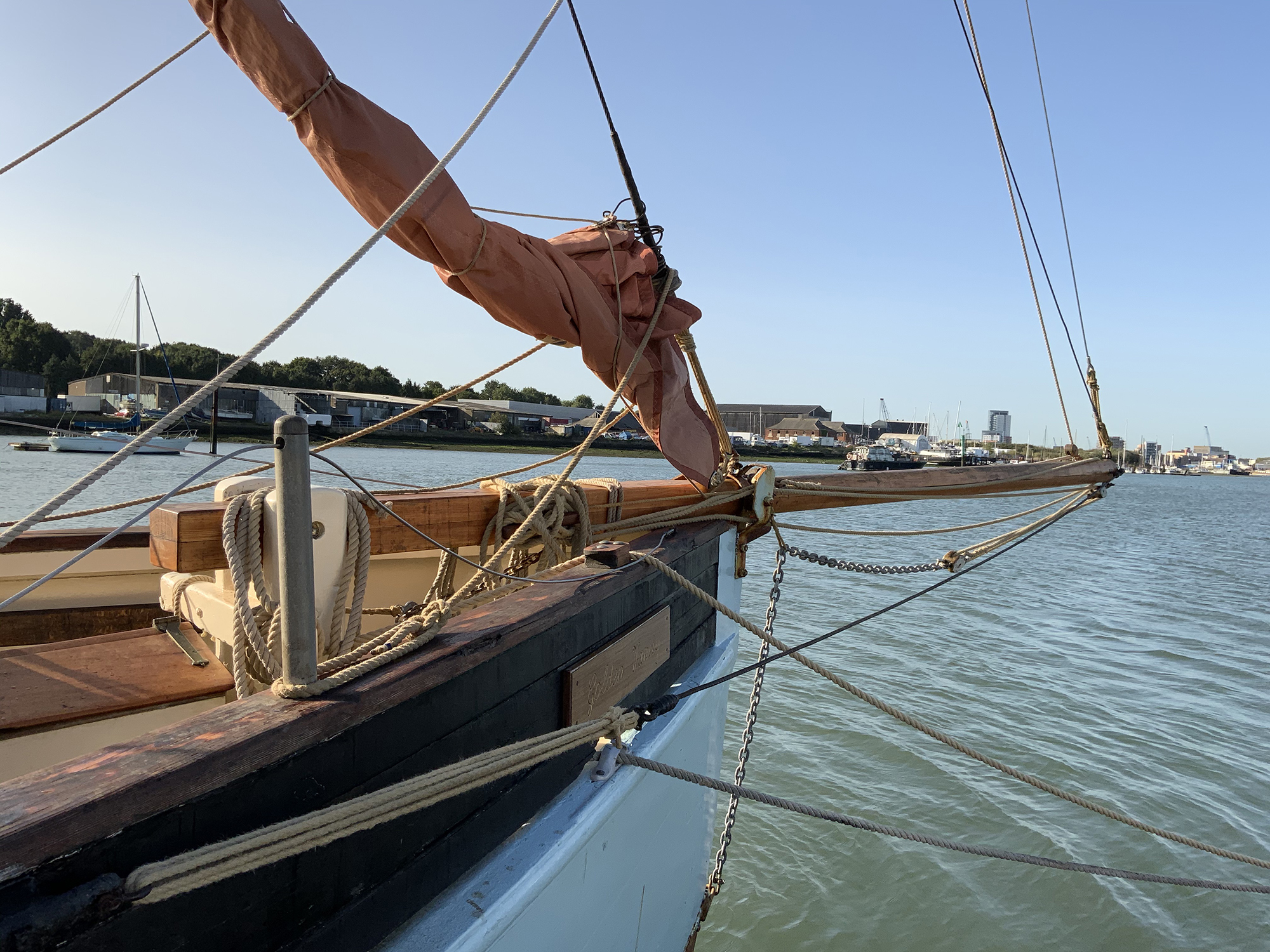Golden Vanity - The History
In 1908, Arthur Briscoe ordered a seaworthy yacht that could be sailed by a man and a boy. The builder was Sanders Shipyard in Galmpton, on the River Dart who specialised in Brixham and Lowestoft fishing smacks.

The Early Days
Step back in time and imagine yourself comfortably hove-to on a sunny blustery day off the Devonshire coast, a perfect 20 to 25 knot warm south-westerly is blowing, the tide has just turned and hundreds of fishing smacks have lowered their trawls and are passing you making a steady two knots to the east.
The work onboard these great working boats has been done – at least for the next 5 to 6 hours, after which the tide will turn again and it will be time to haul the trawl! Then all that remains is to keep a steady course and a good lookout.
Golden Vanity would have been out there, in the thick of it, with her owner Arthur Briscoe, his wife and small son on board, sketching the scene around him.
Sanders built their smallest vessel ever to the lines of a class of sailing trawler known as a Mumble Bee, a 38ft Gaff Cutter, for Briscoe, who named her The Golden Vanity and registered her with Lloyds, at Brixham.
As a marine artist, Arthur Briscoe used Golden Vanity to follow the fishing fleets. He sketched and studied the fishing smacks and the men who worked them and painted the last of the Tall Ships in trade, helping to document the last working days of sail.
In a period when yachts were traditionally large, with large paid crews and professional skippers, Golden Vanity was in the modern sense, a small family sailing yacht. Sailed by the owner and his wife Mary, with their friends as crew, Briscoe’s son Bill joined the crew at 9 months, a very young trainee. Mary took an active and full part in working the boat. On one occasion it is said she stood in the forehatch, which had been stoved in by a gale using her ample hips to plug the hole.
Before the First World War Briscoe, with his family and friends, sailed Vanity extensively in the southern north sea, regularly visiting Holland and Belgium – the lowlands low in the sea shanty from which Golden Vanity took her name. Listen here to ‘The Golden Vanity”`
Interestingly a friend of Briscoe’s, who often sailed on board Golden Vanity at this time, was author Erskine Childers. One could muse about Vanity and the ‘Riddle of the Sands’, but all we know is that Childers was on Vanity in the right area at about the right time.

Restoration
In the seventies Peter Crowther of Dartmouth owned the boat for a number of years. In his ownership she covered many thousands of miles including a number of Atlantic crossings; one, in the 1972 single handed OSTAR, which took him 88 days!
When Peter Crowther sold Golden Vanity she was in need of an extensive refit. It is believed she changed hands a few times before in 1981 she was in Brixham lying derelict on her mooring, 5 foot of fresh water in the bilge, engine under water, the book and gaff rotten, the rig slack and rusty, green moss on the rails and deck. At this point a group of friends first hear about Vanity, fell in love with her, and by the end of the year the Golden Vanity Trust was formed. The plan was to restore the boat to her former glory and to operate her as a sail training vessel for youth in the area.
Primarily because of the enormous cost of such a restoration, progress was extremely slow. However things improved dramatically in 1986 when the Trust was given approval for a Manpower Service Commission project to carry out work on the boat, with the use of a large warehouse in Totnes lent by Mr Carl Throgmorton, generous amounts of timber from Reeves Totnes and grants from the Marine Society and the Sports Council. For two years Vanity was worked upon by Colin Beer, three shipwrights and 12 trainees.
For the first few months more was removed from Vanity than was added, but after 6 months the tide turned and the stem, transom and a few planks above the waterline and the planks that fed the gribble below water were replaced. She was fitted with a new beam shelf, beam clamp, new deck beams and carlins and redocked, refitted below, new mast, top mast and gaff made.
The old 4D engine was completely restriped and rebuilt, sail cloth was obtained and finally in July 1988 Golden Vanity went back into the Dart at Totnes, 80 years after she was first launched.
Under the flag of the Golden Vanity Trust she provided for hundreds of young people, both ordinary and educationally challenged, to enjoy sailing her and learn that they can be a useful part a sailing vessel’s crew.

The Later Years
In 1999 the boat passed to the Trinity Sailing Foundation, a registered charity, whose focus was on supporting the personal development of young people though the medium of sailing such traditional boats as Golden Vanity. Trinity was also about enabling the wider appreciation of local maritime heritage by enabling people to experience life under traditional sail through sailing holidays, charter and sailing courses and learn about the history of such a vessel.
In 2019, Trinity, with funding for all three of their traditional boats becoming harder to come by, ceased operating.
In August 2020 First Class Sailing took on Golden Vanity. We very much hope to continue enabling people, young and adult, to experience life under traditional sail through sailing holidays, charter and sailing courses and learn about the history of such a wonderful vessel as Golden Vanity.
